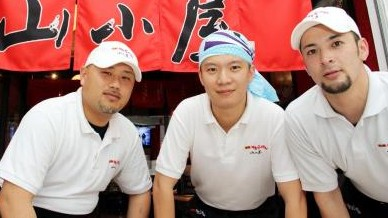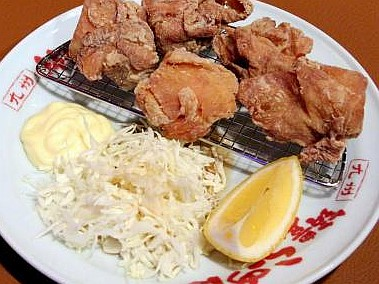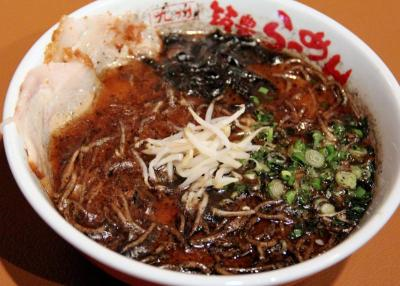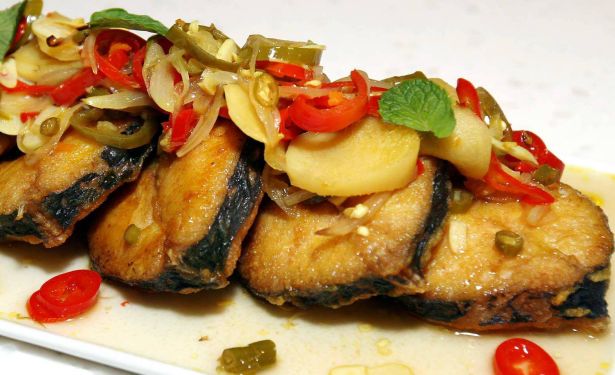You will be bowled over by the seemingly simple ramen.
IF there’s one thing you need to know on your journey to becoming a ramen connoisseur, it is that not all ramen are created equal.
While the Japanese dish is deceptive in its simplicity – in its basic form, ramen is essentially wheat noodles in meat- or fish-based soup – many different elements come together to create that perfect bowlful of steaming, slurpy goodness.
The type of noodles used, the broth they are then immersed in and the myriad toppings all reflect different styles of ramen that originate from the various regions in Japan (see sidebar). In fact, according to the Shin Yokohama Raumen Museum in Yokohama, there are about 28 types of ramen to be found across the country, each differentiated not just by the type of noodle or broth, but even the shapes, textures and lengths of the noodles.
With so many options, it is surprising that ramen hasn’t made more of a splash in noodle-loving Malaysia; while many restaurants serve the dish, familiarity with the different styles and what makes a really great bowl of ramen still isn’t widespread.
But if you ask new kid on the block Yamagoya Ramen’s chef and assistant general manager Alvin Liew, all that is about to change.
“This year will be the year of ramen,” Liew says. “Sushi, which was the last big Japanese food fad here, is no longer unusual. We’re definitely seeing a lot of ramen restaurants opening up in Malaysia now.”
Yamagoya Ramen, which has 150 outlets across Japan, opened its doors earlier this year at Solaris Dutamas in Kuala Lumpur. Serving ramen in the style of the Kyushu region, they pride themselves on their authenticity and high-quality ingredients, he adds.
 Yamagoya Ramenchefs(from left)OgataHidenori,Alvin Liew(who is also assistant general manager)and Veda Koudo.
Yamagoya Ramenchefs(from left)OgataHidenori,Alvin Liew(who is also assistant general manager)and Veda Koudo.“There are actually very few places in Malaysia that serve ‘original’ ramen, because many of the ingredients and techniques involved are not easy to get here. For example, we are not allowed to import the flour to make our own noodles, we can only import the noodles. So, many restaurants import the noodles, but these lose their freshness very quickly. Others make their own soup base, which has a different taste from what you would get in Japan.”
At Yamagoya Ramen, noodles are freshly-made on the premises every morning, while the broth is prepared here based strictly on the parent restaurant’s secret recipe.
The mainstay of Kyushu-style ramen, known as tonkotsu (pork bone) ramen, is its thick, creamy-white broth, made from boiling pork bones, fat and collagen over high heat for many hours. This creates a broth with a strong pork flavour and an almost buttery consistency that is similar to gravy. The noodles, meanwhile, are thin and straight, a perfect complement to the hearty broth.
Liew says it’s important to get the broth right. While the essence for it is brought over from Japan, the chefs at the local outlet still need to add to it by making their own base. To do this, he goes to the market every morning to buy fresh pork.
“I need to carefully choose the meat so that it has the right texture and smell. The pork cannot have a very strong smell because then the essence (for the broth) will be very smelly. It also needs to have an equal amount of fat and meat,” he says, adding that they had to experiment with many different types of local flour before getting their noodles just right.
To get the complete Kyushu experience at Yamagoya Ramen, one can’t go wrong with the Mukashi Special Ramen, a large bowlful of handmade noodles in the tonkotsu broth, served with a whole hard-boiled egg cooked in soy sauce, topped with chashu (sliced pork), bamboo shoots, wood fungus, bean sprouts, spring onions and a nori sheet.
If your appetite is less than ample, there is the Yamagoya Ramen, a dressed-down version with chashu, wood fungus, bean sprouts and spring onions that nevertheless still boasts the stick-on-the-ribs goodness of the tonkotsu broth and Yamagoya noodles. There are also many variations of the basic Kyushu ramen, such as the Black Garlic Ramen, which has broth infused with the sweetish flavour of charred black garlic.
Besides ramen, Yamagoya Ramen also has a selection of appetisers like gyoza and the crowd favourite, fried kampung chicken. Liew says they aim to open five outlets in Malaysia, with plans to introduce a chicken-based broth to appeal to the halal customer base.
“Like any other restaurant, maintaining your standards is very important when it comes to ramen. This is where many local ramen restaurants fall short; what you get on opening day is not what you get a few weeks later.
“We hope to keep giving our local customers authentic Kyushu-style ramen the way it would taste in Japan,” he says.
Types of ramen
JAPAN boasts a wide variety of ramen, with types differing not just from area to area but even from ramen-ya (ramen vendor) to ramen-ya. Broadly, they can be divided into these categories, based on the type of broth used:
Tonkotsu (pork bone) ramen – See story above
Shio (salt) ramen
Thought to be the oldest style of ramen, the broth is a pale yellow, clear variety made with lots of salt and any combination of chicken, fish, vegetables and seaweed (or, occasionally, pork bones).
Noodles used in this broth are typically straight. Usual toppings include chashu (or chicken meatballs), pickled plums and kamaboko (fish cakes).
Shoyu (soy sauce) ramen
This clear, brownish broth is made from chicken and vegetable stock with plenty of soy sauce, resulting in a tangy, salty and savoury taste, and is often served with curly noodles.
This type of ramen is usually topped with bamboo shoots, green onions, kamaboko, nori, boiled eggs, bean sprouts and black pepper, and sometimes chilli oil or spices.
Miso ramen
This newest of the ramen styles was developed in Hokkaido and became popular around 1965. The broth combines large amounts of miso with oily chicken or fish broth, sometimes with tonkotsu or lard.
This creates a thick, sweetish, nutty soup that can be quite heavy, so the noodles served with it tend to be thick, curly and chewy. Toppings include spicy bean paste, butter and corn, leeks, onions, bean sprouts, ground pork, cabbage, sesame seeds, white pepper and chopped garlic.







